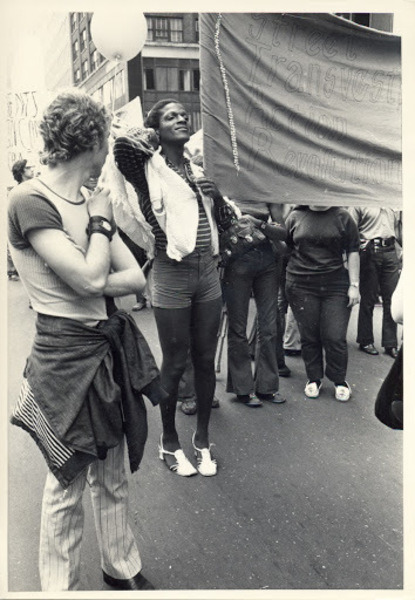///////////////////// Archiv / Arbeit / Alltag ///////////////////////////////////////////////////////////////
Don't wanna be here? Send us removal request.
Photo
Die spinnen, die Römer!







Do you like visiting libraries or bookstores when you travel?
© madeline lu
18K notes
·
View notes
Link
Das “Album Amicorum” wird im Artikel mit Facebook verglichen - gar nicht so abwegig! Der Urheber bzw. Sammler, der den Dreißigjährigen Krieg fast bis zum Ende erlebt hat, war auch eine interessante Figur:
https://de.wikipedia.org/wiki/Philipp_Hainhofer
1 note
·
View note
Link
Der Podcast 111 Kilometer Akten des Stasi-Unterlagen-Archivs begeistert mich seit vielen Wochen. Nachdem ich die leichte Sprödigkeit der Einführungs-Folge überwunden hatte, kam ich nicht mehr davon los. Das ist so unglaublich spannend und vermittelt so anschaulich den Wert von Archivarbeit, ich kann es gar nicht genug loben!
Am Ende immer ein O-Ton aus dem Audioarchiv. Transkript zu jeder Folge auf der Website.
Besondere Empfehlung: Episode 11 über arabische Studenten als IM. Das war mir völlig neu.
2 notes
·
View notes
Link
Wer es nicht eh schon aus der FaMI-Ausbildung kennt... und wer statt YouTube doch lieber in ein Buch schaut... es besteht praktisch nur aus Vokabelliste und Beispielsätzen, aber das find ich grade gut. Keep it simple.
Rezension dazu hier (S. 306): http://www.archive.nrw.de/archivar/hefte/2012/ausgabe3/ARCHIVAR_03-12_internet.pdf
2 notes
·
View notes
Link
Jetzt hab ichs doch gemacht.
Aua aua aua aua aua aua aua aua aua aua aua aua........................
7 notes
·
View notes
Link

Ausstellung von (unter anderem) Architekturmodellen im Stil eines Schaudepots. Da muss ich hin!
Das Thema interessiert mich gewissermaßen dienstlich: jeden Freitag arbeite ich mit einer Kollegin am Erfassen unserer Modellsammlung und der Vorbereitung für eine Restaurierung, Neuverpackung und spätere Ausstellung - vielleicht sogar als dauerhaftes Schaudepot, aber das ist noch Zukunftsmusik...
Ich liebe Miniaturen und Modelle. Vielleicht hab ich doch mal wieder den Beruf verfehlt, es wäre nicht das erste oder zweite Mal.
4 notes
·
View notes
Link
Noch mehr TikTok. Die Uffizien wissen das wirklich lustig zu nutzen. Ich finds trotzdem einen Schmarrn. Grantel grantel.
9 notes
·
View notes
Link
Schon paar Tage alt, aber lesenswert. Auch wenn ich TikTok als Schmarrn betrachte, sind Verbotsfantasien der noch größere Schmarrn.
“Perhaps TikTok (and for that matter, all data-collecting technology firms) does present a threat to our privacy and security. But what I’ve come to fear is that we will confront authoritarianism by copying its methods.”
2 notes
·
View notes
Link

Das documenta Archiv hat eine neue Leitung, heißt es im Radio. Gleich mal die Website besuchen. Ja, das wär schon auch ein interessanter Arbeitsplatz.
3 notes
·
View notes
Video
youtube
Für alles, was im Leben schief gelaufen ist und weiterhin schief läuft. Für Fehlerkultur, Humor und Melancholie. Für alle (und ich weiß, ihr seid da draußen), die auch mit den Hausaufgaben hadern.
Außerdem: für noch mehr Musik hier und sonstwo!
3 notes
·
View notes
Link

Man muss sich ein bißchen durchklicken, die Sammlung ist gehaltvoll. Hier ein Auszug aus einer Liste verschiedenster Geschlechterkonstruktionen around the world:
Calabai/Calalai/Bissu (Sulawesi, Indonesia)
“The Bugi people of southern Sulawesi recognize three sexes (male, female, intersex) and five genders: men, women, calabai, calalai, and bissu. Calabai are [birth-assigned] males who embody a feminine gender identity. Calalai are [birth-assigned] females who embody a male gender identity. Bissu are considered a "transcendent gender," either encompassing all genders or none at all. The bissu serve ritual roles in Bugi culture and are sometimes equated with priests.”
8 notes
·
View notes
Video
youtube
"The 20th century was about audiovisual material, our memory of the 20th century is heavily audiovisual, but our sense of the 21st century is going to be a different kind of audiovisual (...). In a situation where everything can be recorded easily, archiving is not going to be so much about what we can bring in, but about what to exclude. Otherwise, you’re going to end up with a white noise of information which is completely incomprehensible."
Will Prentice, British Library Audio Engineer and Conservation Specialist (13:54 - 14:21)
4 notes
·
View notes
Video
youtube
Jemand wollte mehr Musik auf diesem Kanal!
Hat nix mit Archiv zu tun, trotzdem ein Klassiker. Und wenn ichs recht bedenke - der hypnotische Sound eignet sich super zum fließbandartigen Verknüpfen von GND-Datensätzen.
4 notes
·
View notes
Photo

Sommerloch: Kollegin hat ein Haiku gedichtet, ich hab die Kiste abgelichtet. Unsere Transportmittel erfahren meist wenig Liebe. Tut also mal gut.
4 notes
·
View notes
Link
Eine Hörbiografie in 20 Folgen, erarbeitet von Michael Maul vom Leipziger Bach-Archiv. Sehr unterhaltsam umgesetzt mit viel Musik und echt sächsisch tönenden Sprechern :)
Hier noch der Link zum Bach-Archiv, auch eine schöne Website:
https://www.bacharchivleipzig.de/de/bach-archiv

5 notes
·
View notes
Photo

General Order No. 3, issued by Maj. Gen. Gordon Granger, June 19, 1865. (RG 393, Part II, Entry 5543, District of Texas, General Orders Issued).
ICYMI: Archives Staffers “Find” Original Juneteenth Order!*
* FYI - it was never lost…
Today’s post is by Miriam Kleiman, National Archives Program Director for Public Affairs.
What’s the deal? While Archives writer Michael Davis was working on a Juneteenth story for National Archives News, he wondered if the Archives had the original General Order No. 3 that informed the 250,000 slaves in Texas that they were free.
Why was Michael Davis interested? Davis, who is African American, underscored his interest in seeking out the original document for this anniversary:
I was curious to know if we had the actual document of General Order No. 3 in our holdings. In light of what has happened recently in our nation with police brutality, I wanted to make sure that we highlighted Juneteenth, the freeing of enslaved people in 1865. This is a document stating that we are free now. It holds weight to black history.
Davis started exploring and reached out to his colleague Trevor Plante, head of reference at the DC Archives. Plante physically came to the building, searched the stacks, and located the original, document handwritten in beautiful script.

Michael Davis
Why wasn’t the handwritten Order known to exist before? The National Archives in DC holds more than one billion pages of records, and only a small percentage of the Archives’ voluminous holdings (more than 14 billion pages nationwide) have been scanned. The Order was part of the Records of U.S. Army Continental Commands (RG 393), that comprises nearly 82,000 cubic feet of records. As the great archivist Greg Bradsher has said, “the National Archives is like a giant restaurant with no menu. Unless someone else has asked for pork chops [recently], no one has looked for them.”
Where was this located? The decree was found in a leather-bound Union Army order book stored on the 10th floor of the Research Center of the National Archives Building in DC. In 1865, the book was in Galveston, TX, the Union Army’s headquarters for the district of Texas. It was then sent to the War Department in DC, and then to the National Archives four score years ago, open and available to researchers upon request. Plante said that judging by the condition of the volume, it has been used by researchers over the years.
We knew about the Order. Why is this news? We knew about printed versions of the decree, but this handwritten record predates the others. Until Thursday’s discovery, this was the record (below), from the War of the Rebellion: A Compilation of the Official Records of the Union and Confederate Armies (127 volumes). The document will be officially digitized and added to the National Archives Catalog and highlighted on our African American History page.

What does the Archivist think about this discovery? Archivist of the United States David S. Ferriero gushed: “I think it’s terrific. I think the timing is just amazing.” He added: “The National Archives safeguards many of the nation’s most important records related to African American history and civil rights, and General Order Number 3 is one of those records,”
The Archivist, who regularly (pre-COVID) made the rounds of the research rooms to learn about new discoveries, has shared that such “rapturous research” is “why I have devoted my life to facilitating access to information!” (see AOTUS blog). He added: “We know from history that certain events took place, and it’s always a delight when we can help make history come alive by sharing the actual documentation of those events.”
What did Trevor Plante think when he “found” it? Plante, a military history buff who’s likened his work to “being a detective,” was thrilled to see the original and noted: “It’s more powerful when you see the handwritten version of it, as opposed to the printed versions that came much later.” ”This is something that we haven’t tracked down before.” he said, adding that the handwritten entry “absolutely” predates the printed versions of the order” (from here).
Fun fact! Trevor Plante is the model for Beecher White, the main character in author Brad Meltzer’s Archives-based mystery The Inner Circle. Excerpt from the book’s opening: “There are stories no one knows. Hidden stories. I love those stories. And since I work in the National Archives, I find those stories for a living.”
In response to Michael Davis’s timely request, that’s exactly what Plante did last Thursday.

Author Brad Meltzer (L) with Trevor Plante
Read more in Michael Davis’ National Archives News story “National Archives Safeguards Original ‘Juneteenth’ General Order.”
251 notes
·
View notes
Photo

Old School, dafür selbst gebastelt. Wer erinnert sich noch an die ganzen Katzen, die einem immer gesagt haben: U R DOING IT WRONG?
Memes haben mich nie so interessiert, aber die ersten Lolcats waren schon süß. Ja blöd, jetzt hab ich gar keine Katze im Bild.
9 notes
·
View notes